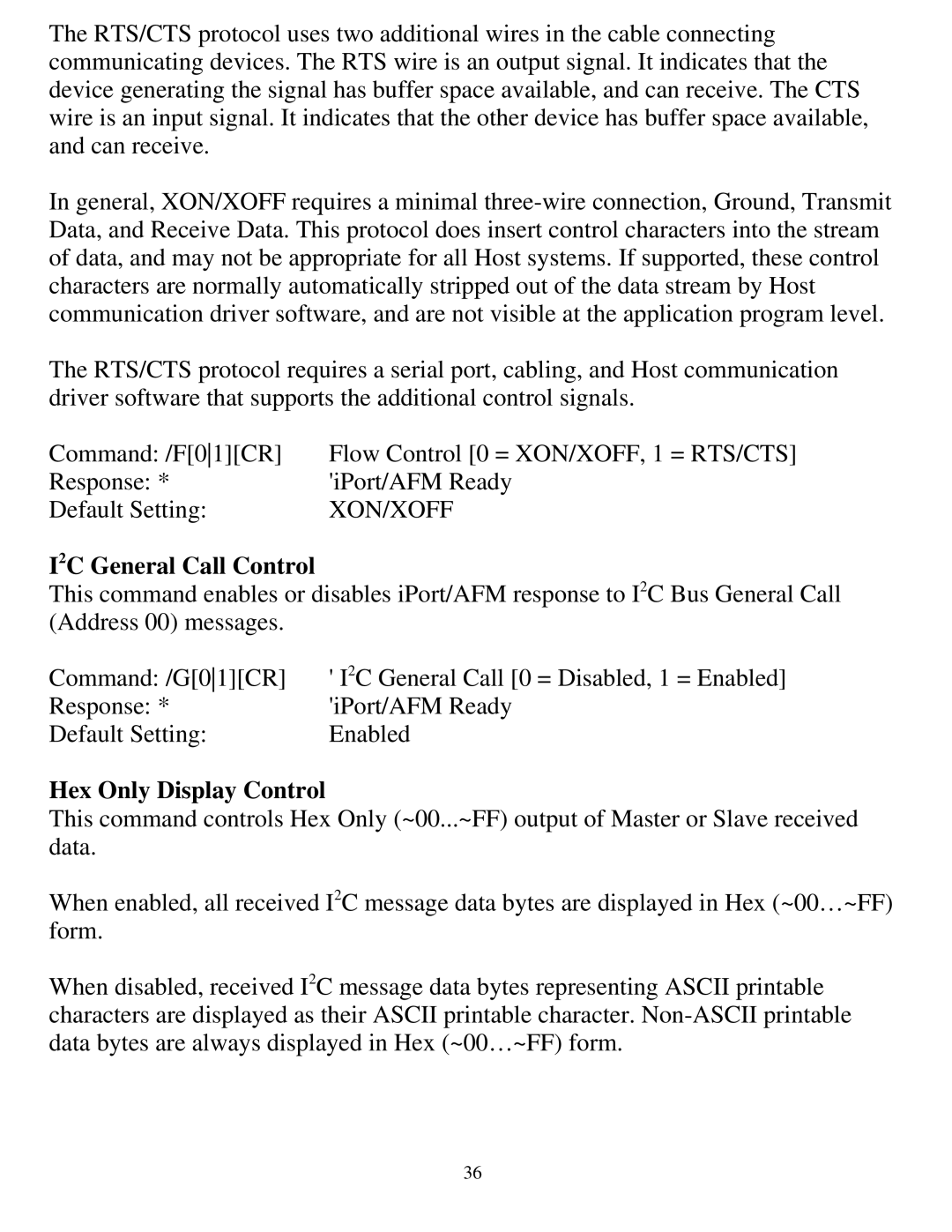The RTS/CTS protocol uses two additional wires in the cable connecting communicating devices. The RTS wire is an output signal. It indicates that the device generating the signal has buffer space available, and can receive. The CTS wire is an input signal. It indicates that the other device has buffer space available, and can receive.
In general, XON/XOFF requires a minimal
The RTS/CTS protocol requires a serial port, cabling, and Host communication driver software that supports the additional control signals.
Command: /F[01][CR] | Flow Control [0 = XON/XOFF, 1 = RTS/CTS] |
Response: * | 'iPort/AFM Ready |
Default Setting: | XON/XOFF |
I2C General Call Control
This command enables or disables iPort/AFM response to I2C Bus General Call (Address 00) messages.
Command: /G[01][CR] | ' I2C General Call [0 = Disabled, 1 = Enabled] |
Response: * | 'iPort/AFM Ready |
Default Setting: | Enabled |
Hex Only Display Control
This command controls Hex Only (~00...~FF) output of Master or Slave received data.
When enabled, all received I2C message data bytes are displayed in Hex (~00…~FF) form.
When disabled, received I2C message data bytes representing ASCII printable characters are displayed as their ASCII printable character.
36
